The RNLI’s ‘Jail and Bail’ fundraising event
- Exhibited by
- Leesa Harwood, Lifesaving and Fundraising Director, RNLI
- Added
- January 10, 2019
- Medium of Communication
- Events, online
- Target Audience
- Type of Charity
- Country of Origin
- USA
- Date of first appearance
SOFII’s view
What a fantastic idea! Who hasn’t at some point wanted to put their boss in jail? As Leesa Harwood of the Royal National Lifeboat Institution demonstrated at I Wish I’d Thought Of That 2018, you can now do so in a fun and engaging way whilst raising significant funds for a great cause. It’ll make you laugh, gets you to tease your boss or major donors and contribute to the well-being of beneficiaries. What’s not to love?
Background
I first encountered this fundraising event in the early 1990s as a grass roots fundraiser for the American Cancer Society in the USA. It was a staple ingredient of our fundraising calendar. I think it still has potential to evolve to suit today’s fundraising environment.
The concept is that high profile people or senior professionals are nominated by their colleagues or friends to be ‘arrested’ by real or volunteer police officers and taken to a mock jail. There they are charged by a mock judge and incarcerated until they have raised enough donations to meet their bail target set by the judge.
This is an example of the RNLI’s version of a Jail and Bail. ‘Boss in a Boat’ took place in Canary Wharf. The prisoners were senior finance sector professionals. They were arrested by the RNLI mascot, Stormy Stan and taken to an inshore lifeboat moored nearby.
This example shows how the concept can easily be adapted to fit with your charity’s mission.
Once kitted up in RNLI crew kit the prisoners (directors from Barclays Bank) set about creating Just Giving fundraising pages and ringing their friends and colleagues for donations so that they could make bail and get back on dry land. We think the Bosses secretly enjoyed their time on the fastest lifeboat in the fleet, and some stayed a little bit longer than they needed to.
Special characteristics
First of all, you pick a location. But be clever about where you incarcerate people. Make it fun. Pick somewhere where they would chose to spend time.
• A restaurant where they can receive free food and nibbles during their incarceration
• A high footfall area like a shopping mall where they can be seen and visited by teams of colleagues
• A mission-related jail - The RNLI incarcerated ‘prisoners’ in a lifeboat moored in Canary Wharf. See above.
Then get the word out. Back in the early 1990s there was no such thing as social media. But now you can set up a Jail and Bail Facebook page or digital giving page. Spread the word, ask people to nominate their bosses or colleagues for arrest and incarceration for an hour, a morning or a day, raising bail from friends to be released.
Once you have secured your location you can start to build your list of suspects. Some suspects know in advance and begin their fundraising days or weeks before they are arrested. Other are taken by surprise and arrested mid-meeting. Always make sure that you have the support of PA’s, bosses, colleagues or family members for the surprise arrests. Diaries will need to be cleared for all prisoners and they will need to feel comfortable taking part.
People will often willingly spend time in jail with potential customers or professionals they would like to meet. Time slots for arrest and jail slots can be sold if this is the case.
For prisoners who know about their arrest in advance, you need to make sure that you provide all the digital and hard copy tools and templates they will need to raise money before their arrest.
Sometimes, the prisoner’s colleagues also start raising money in competition with the prisoner. Then, bail is set at the amount raised by the colleagues and the prisoner must raise the difference between their fundraising total and their colleagues’ fundraising total to escape arrest or get out of jail.
The beauty of this event is the variations you can introduce to encourage competition or allow prisoners to escape arrest of spend a token amount of time in jail instead of the whole day.
Jail and Bail events can take place from one day to one week. So your jail might be a temporary cage or a more substantial building. Some jails are actual jail cells in museums or police stations.
In the early 1990s Coca-cola and Pepsi built jails out of multipacks of cans. We then sold the multipacks off as the jail was taken down at the end of the event, with all proceeds going to the charity.
In restaurants, a section of the restaurant can be barricaded off. In shopping malls, a jail is usually central with volunteers collecting donations and opportunities for passers by to donate to help prisoners get out of jail.
It’s important to make sure that jail locations have good wifi or mobile reception so that prisoners can phone friends and create/access their digital giving pages. It’s also important that the jail is fairly close to parking or unloading spaces so that prisoners can be dropped off by the ‘police van’ when they are brought from their offices. Nearby toilet facilities are important too – but watch out for attempted Jail Breaks during toilet visits!
Make sure you take ‘mug-shots’ for the prisoners to keep, and that they have prisoners uniforms to wear too.
Bringing ‘em in is the fun part and the most high profile element of each arrest. Tipping off the press is important, as well as live social media streaming under the event hashtag.
If you can use minibuses or vans to bring in multiple prisoners at the same time you will generate a party spirit and everyone will have more fun.
Merits
One of the best things about Jail and Bail is that it is much easier and cheaper to run with modern technology than it was in the days before smart phones and social media. In that respect it was almost an event ahead of its time.
Instead of house-brick sized cell phones we now have smart phones. Digital contact lists have replaced bulky filo faxes. Digital giving can raise much more than cash collection boxes and by setting up on-line donation pages, prisoners can co-ordinate their fundraising quickly.
Results
So, how much money can you raise through a jail and bail. That depends. If you get enough of the right people, in the right place, at the right time you can generate significant income. Take a look at these two prisoners from Barclays, one raised over £13,000 and the other almost £9,000.
If you can find just five prisoners over five days and each raises just £5,000 you’ll generate £125,000 and lots of great publicity.
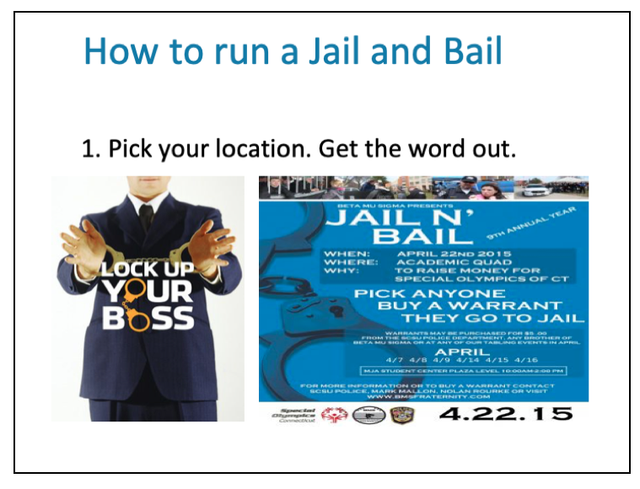 View original image
View original image
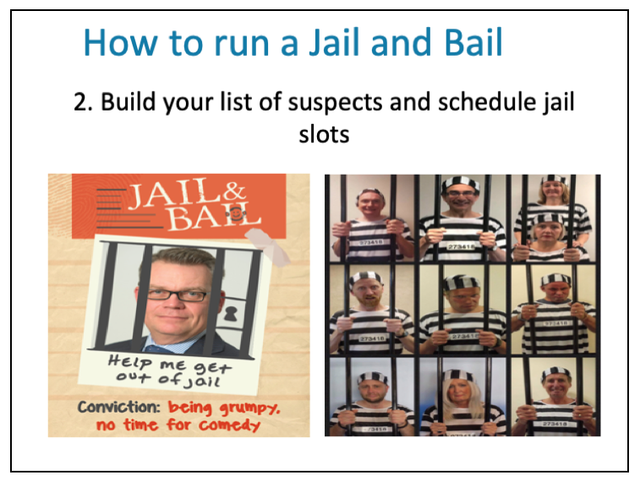 View original image
View original image
 View original image
View original image
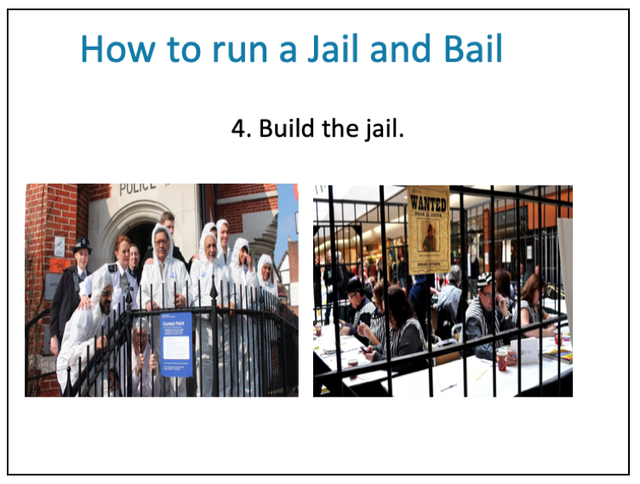 View original image
View original image
 View original image
View original image
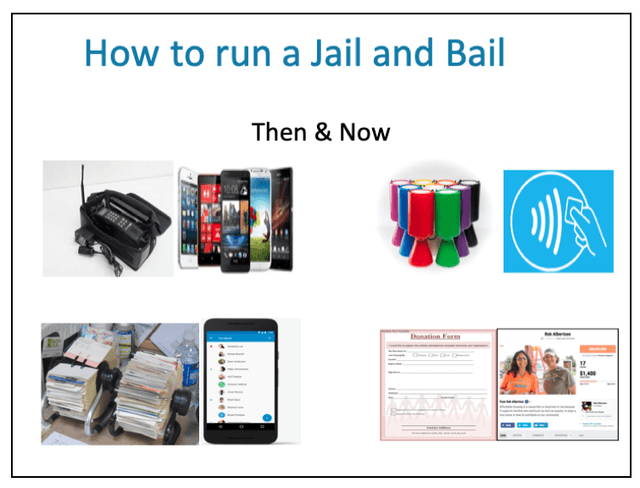 View original image
View original image
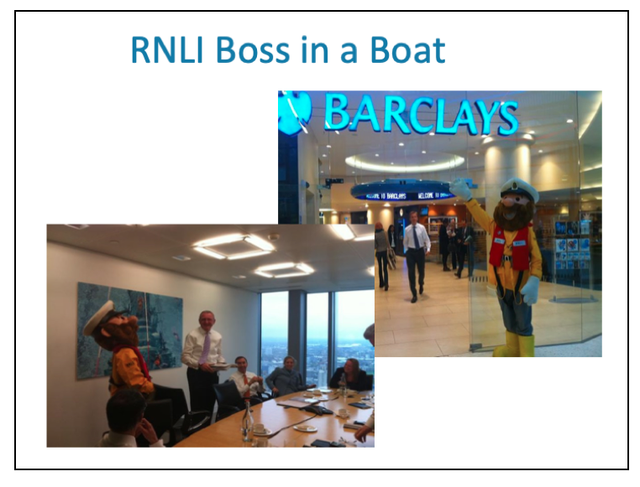 View original image
View original image
 View original image
View original image
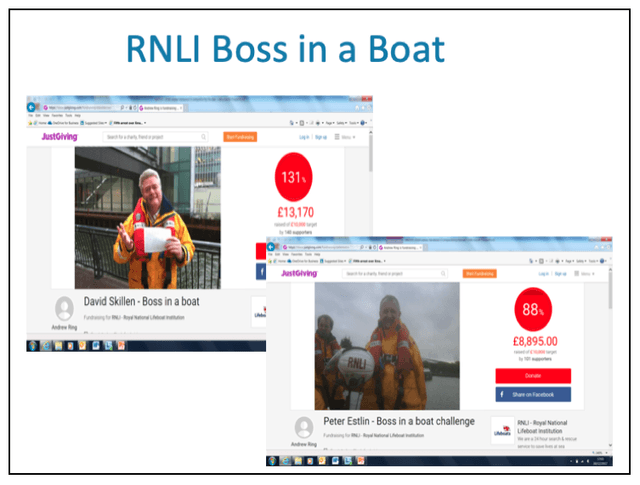 View original image
View original image





















